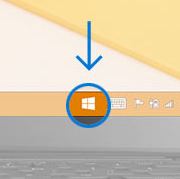A Microsoft Lelltja A Virtual Pc For Mac
When Microsoft took over development of Virtual PC, after buying Connectix at the beginning of 2003, it promised Mac users a reason to celebrate. With Microsoft’s intimate knowledge of Windows, the company suggested, we could expect a better, faster Windows emulator.

After several delays, version 7 with Windows XP Professional—the first full Microsoft release— is here. Unlike version 6, it’ll run on your G5, and it includes some improvements. But we’re not ready to pop the cham-pagne corks. Alter Ego or Evil Twin? Virtual PC creates a virtual Windows machine inside your Mac.
You can copy and paste—and even drag and drop—files from Windows to your Mac, and vice versa. You can display a Windows Start menu, as well as the icons of your running Windows applications, in your OS X Dock. If you need to run Windows programs on your Mac, Virtual PC is a godsend. But once you get past Windows XP’s garish, Dr. Seuss-like colors, you have to adjust to the sleepy pace. Microsoft describes Virtual PC as your Mac’s alter ego, but sometimes it can feel like the Mac’s evil twin.
Microsoft hasn’t eliminated the main complaint that has dogged Virtual PC since it was first introduced seven years ago—slow performance. Virtual Performance Is Virtual PC 7 faster than previous versions? The answer is an unequivocal yes—I think so. To assess performance, I ran a battery of tests using two popular Windows utilities—Fresh Diagnose and Dr. Hardware—after allocating 32MB, 256MB, and then 512MB of RAM to Vir-tual PC. My results showed no improvement in processor speed, about a 5 percent improvement in multimedia performance, and the biggest boost (as high as about 50 percent) in some graphics tests. But I soon found that benchmarks aren’t the most valid indicators of a virtual computer’s performance, for various technical reasons (for example, OS X’s background activity influences the virtual machine’s performance).
So I also used a handful of Windows-only applications and 2-D games such as Fritz, a popular chess program (Virtual PC does not support 3-D graphics), as a typical user would. You’re not getting a faster virtual computer with this version; you won’t notice any difference in the performance of computational tasks. But screen redraws are a little smoother. Launching is a bit quicker; application switching, a tad perkier.
This isn’t a huge improvement. I’ll put it this way: If you’re on the freeway crawling along at 10 mph, accelerating to 11, 13, or even 15 mph isn’t very exciting.
You might get home a few minutes earlier, but your commute won’t feel much faster. Getting Friendlier The performance boosts may be disappointing, but Microsoft has introduced a number of user-friendly improvements. Installation is easier, requiring fewer steps and less configuration. There’s a foldout Installation Overview to get you started and a slender Getting Started manual that explains the ins and outs of virtual machines.
A Microsoft Latja A Virtual Pc For Mac

A Microsoft Lelltja A Virtual Pc For Mac Mac
The program’s Help has also been expanded. Virtual PC’s preferences are more flexible, and changing settings is easier—as is printing. If you’re running OS X 10.3 (Panther), you can print directly to your Mac printer (or to a network printer) without installing Windows printer drivers. And now you don’t have to decide whether to save state, shut down, or turn off your computer. With Fast Save, all you have to do is click on the red Close button—or quit Virtual PC—to save all open files, put your virtual computer to sleep, and exit the application.
When you relaunch, Virtual PC puts everything neatly back where it was before you saved. Bucking the System If you’re thinking about upgrading, note that Microsoft has increased the system requirements for Virtual PC 7, from a 500MHz or faster G3 or G4 processor to a 700MHz or faster G3, G4, or G5. Physical RAM requirements have increased from 256MB to 512MB. While version 6.1 ran on OS 9, you can use only OS X 10.2.8 or later to run version 7. And as with previous versions, there’s no support for upgrade cards or accelerators. In general, I found that Virtual PC 7 was stable. The program did occasionally hang after I changed settings and rebooted, but this bug seems to be fixed in the recently released version 7.0.1.
Macworld’s Buying Advice If you’re an experienced Windows user who succumbed to Apple’s Switch campaign, you’ll feel right at home in Virtual PC. If you’re a die-hard Mac user who has to run Windows programs to make peace with the masses, Virtual PC is less expensive (and smaller) than a second machine under your desk. Getting used to Windows will be a chore, but finding your way around Virtual PC has gotten easier. And if you’re a Virtual PC 6.1 user, you should upgrade only if you need G5 compatibility or every ounce of performance you can get.